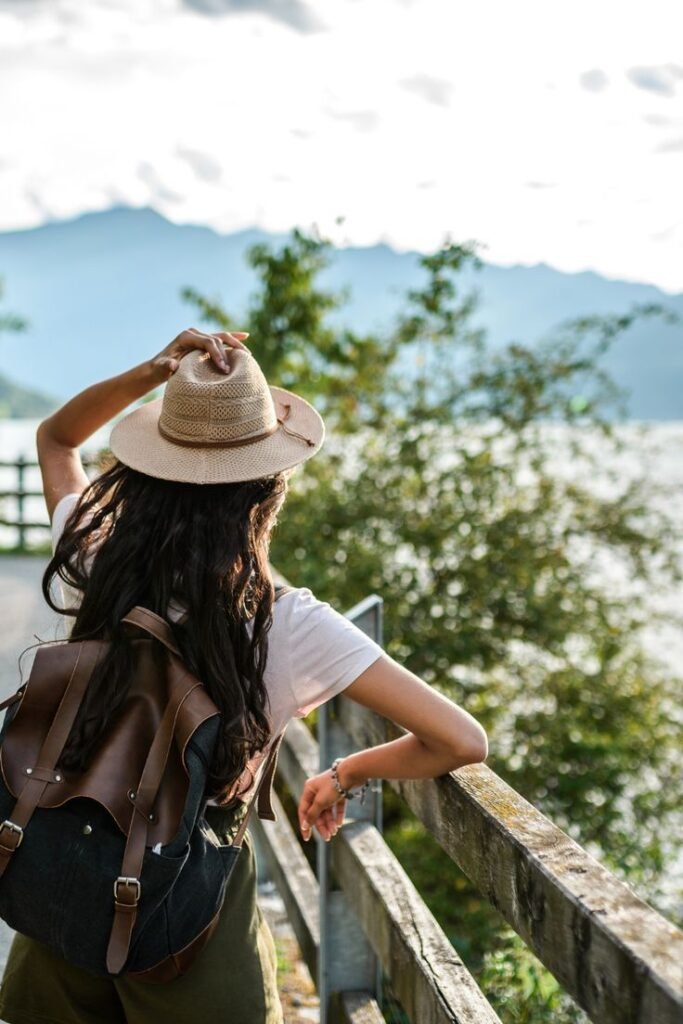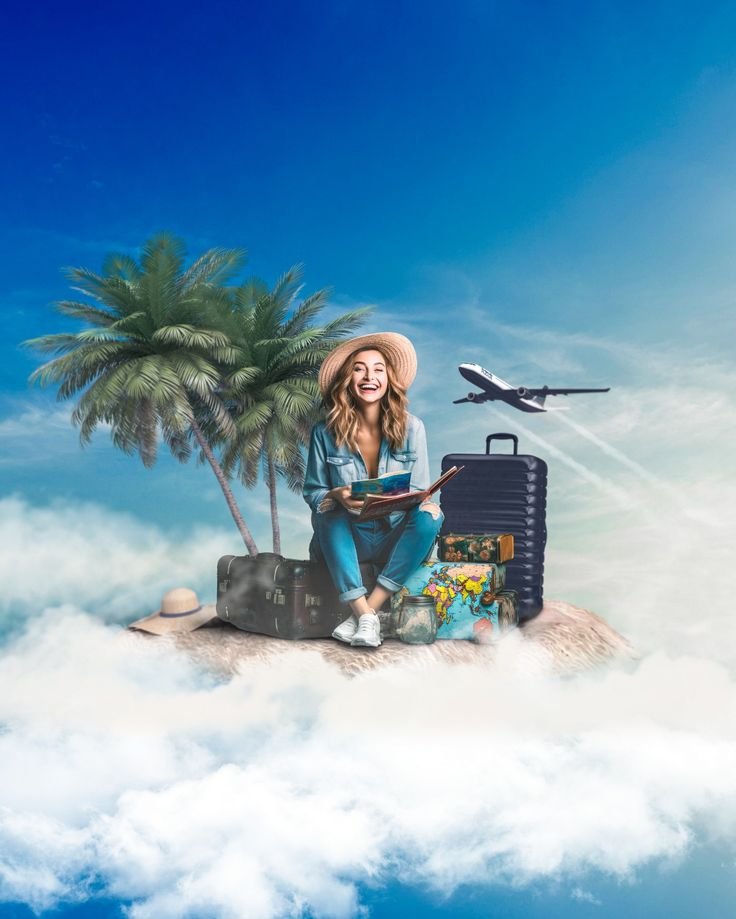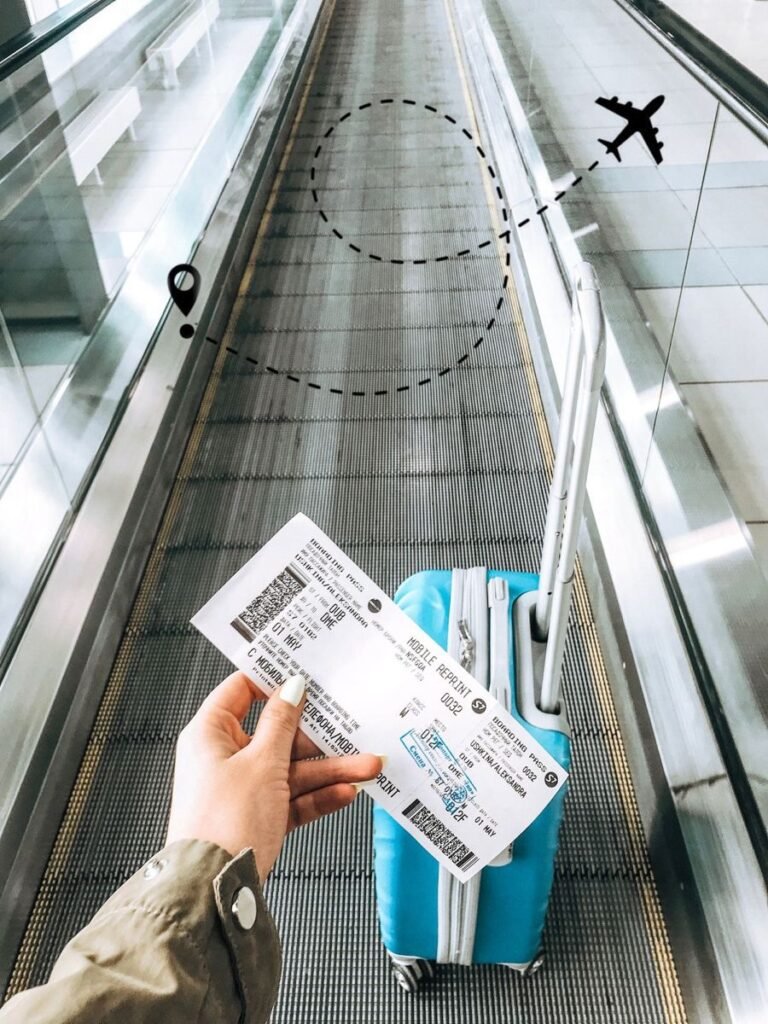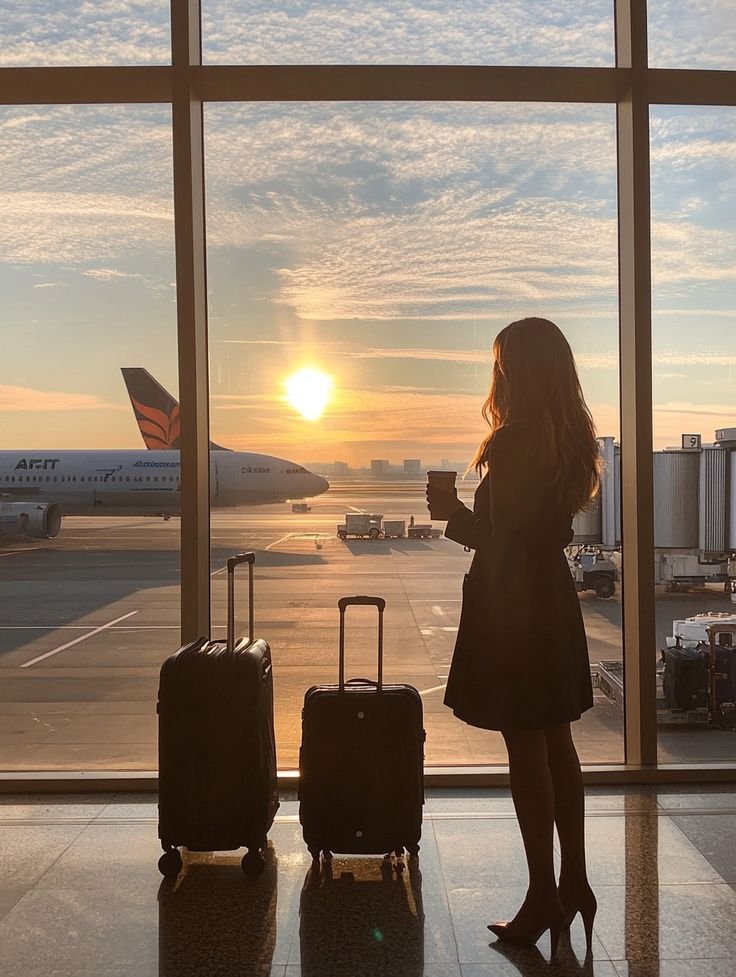Introduction
Solo travel has become one of the most rewarding and transformative ways to explore the world. For many, the thought of venturing out alone may feel intimidating at first, but the experience often leads to newfound independence, confidence, and a deeper connection with oneself. Unlike group trips, traveling solo allows you to set your own pace, choose your own destinations, and immerse yourself fully in cultures without compromise.
At the same time, solo travel does come with its challenges. Safety is a primary concern, especially for first-time solo travelers. Questions like “Will I be safe walking alone at night?” or “What if something goes wrong?” often discourage people from taking the leap. While these concerns are valid, they can be managed with preparation, awareness, and smart decision-making.
Equally important is the mental aspect of solo travel. For some, the idea of being alone in a foreign place sparks fear or self-doubt. However, with the right mindset and confidence-boosting strategies, traveling alone can feel empowering rather than isolating.
This guide provides practical safety tips and confidence-building techniques that will not only help you navigate solo travel safely but also allow you to embrace the freedom and joy it brings.
1. Preparing for a Safe Solo Trip
Preparation is the foundation of a successful solo journey. The more you plan ahead, the more confident and secure you’ll feel once you set foot in your destination. Solo travel doesn’t mean leaving everything to chance—it means being ready to face different situations independently. Here are essential steps to prepare for a safe and enjoyable adventure.
1.1 Research Your Destination Thoroughly
Before you book your ticket, spend time researching the safety profile of your chosen destination. Look up Solo Travel advisories, local laws, cultural norms, and common scams tourists might face. Understanding how locals dress, what neighborhoods to avoid, and the general atmosphere of a city helps you blend in and avoid unnecessary risks. Reading Solo Travel blogs, guidebooks, or joining online communities of solo travelers can also give you valuable insights.
1.2 Choose the Right Accommodation
Your accommodation plays a big role in your safety and peace of mind. Look for hotels, hostels, or guesthouses with strong reviews that highlight security and cleanliness. For women traveling solo, many destinations offer female-only dorms or boutique hostels designed with safety in mind. Always check if your accommodation has 24-hour reception, secure locks, and is located in a safe neighborhood.
1.3 Share Your Itinerary
Even though you’re Solo Travel alone, it’s important that someone back home knows where you are. Share your flight details, accommodation bookings, and a rough itinerary with a trusted family member or friend. Regular check-ins via text or email can give both you and your loved ones peace of mind.
1.4 Don’t Skip Travel Insurance
Solo Travel insurance may seem like an unnecessary expense, but it’s one of the smartest investments for solo travelers. It covers medical emergencies, lost luggage, theft, or even unexpected trip cancellations. Knowing you’re financially and medically protected helps reduce stress in unfamiliar situations.
1.5 Pack Smart and Light
When Solo Travel, you’ll be responsible for all your belongings, so packing light is essential. Carry versatile clothing that can be mixed and matched, along with safety items like a money belt, portable charger, and copies of important documents. A lightweight first-aid kit, flashlight, and universal adapter can also come in handy. Avoid flashy jewelry or expensive gadgets that might draw unnecessary attention.
1.6 Plan for Connectivity
Staying connected is a key part of solo travel safety. Before leaving, check if your phone plan offers affordable international roaming. If not, consider buying a local SIM card or renting a portable Wi-Fi device. Having reliable internet ensures you can use maps, contact loved ones, and quickly find help if needed.
Preparation is not about fearing the unknown—it’s about equipping yourself with the tools and knowledge to travel with confidence. With the right research, planning, and mindset, you’ll not only feel safer but also free to enjoy the unique joys of solo exploration.

2. Essential Safety Tips While Traveling Alone
Traveling solo offers freedom and adventure, but it also requires heightened awareness. Unlike group travel, where responsibilities are shared, you alone are responsible for your safety and well-being. While this may feel overwhelming at first, practicing smart safety habits quickly becomes second nature. Here are some essential safety tips to keep in mind throughout your journey.
2.1 Stay Aware of Your Surroundings
Awareness is your greatest tool. Whether walking through a busy market or sitting in a café, stay mindful of the people around you and the environment. Avoid distractions like staring at your phone for long periods. A confident posture—head up, shoulders back, purposeful stride—deters potential troublemakers because it signals awareness and confidence.
2.2 Use Public Transportation Wisely
Public transportation is often cheaper and more authentic than taxis or private cars, but it also comes with risks. Research local systems beforehand—learn how tickets are purchased, the safest routes, and what times to avoid. On buses or trains, keep valuables close and avoid empty carriages late at night. For ride-hailing apps, confirm the driver’s details before getting in.
2.3 Beware of Scams and Tourist Traps
Scams target tourists everywhere—from overpriced taxis to fake tour guides. Research common scams at your destination so you can spot them easily. A general rule: if something sounds too good to be true, it probably is. Always agree on taxi fares before the ride, book tours through verified platforms, and politely decline offers from overly persistent strangers.
2.4 Protect Your Digital Security
Digital safety is just as important as physical safety. Avoid logging into sensitive accounts on public Wi-Fi; use a VPN to secure your internet connection. Enable two-factor authentication for important apps and always keep backups of important documents (passport, visas, tickets) in cloud storage.
2.5 Take Extra Precautions at Night
Exploring a city at night can be tempting, but it’s also riskier. Stick to well-lit, busy areas and avoid deserted alleys or isolated paths. If you’re unsure about walking back to your accommodation, use trusted taxi services or ride-hailing apps instead. Carry a small flashlight or use your phone’s torch if you must navigate poorly lit areas.
2.6 Handle Money Safely
Don’t keep all your money in one place. Divide cash between your wallet, money belt, and a hidden stash in your bag. Use credit or debit cards where possible but notify your bank of your travel plans to avoid blocked transactions. Be discreet when handling money in public, and avoid displaying large sums.
2.7 Blend in with Locals
Standing out as a tourist can make you a target. Learn basic phrases in the local language, dress appropriately, and observe how locals behave. For example, in conservative countries, modest clothing is not only respectful but also safer. Moving with confidence and adapting to local norms shows that you respect the culture and are less likely to be singled out.
2.8 Trust Your Instincts
One of the most powerful tools solo travelers have is intuition. If a situation, person, or place feels wrong, remove yourself immediately. Never feel pressured to be polite if you’re uncomfortable. Saying “no” firmly or walking away quickly can prevent bigger problems.
2.9 Keep Emergency Numbers Handy
Before arriving in a new country, save local emergency numbers on your phone. Also, note the location of the nearest embassy or consulate. Having this information readily available ensures you can act fast if something unexpected happens.
2.10 Stay Sober and Alert
While enjoying a drink is part of many travel experiences, overindulging while alone can put you at risk. Alcohol lowers your awareness and judgment, making you vulnerable to theft or unsafe situations. If you drink, do so in moderation and only in safe, reputable places.
Solo travel doesn’t mean being paranoid—it means staying informed and cautious while still enjoying the adventure. By practicing these habits consistently, you’ll build confidence, reduce risks, and gain peace of mind wherever you go.
3. Confidence Boosters for Solo Travelers
While safety is often the first concern in solo travel, confidence is what allows you to truly enjoy the experience. Many first-time solo travelers worry about loneliness, fear of getting lost, or being judged by others. These feelings are natural, but they can be managed and transformed into empowerment. Building confidence takes preparation, small steps, and the willingness to push your comfort zone.
3.1 Overcoming Fear Before the Trip
Fear often begins before you even board the plane. Thoughts like “What if something goes wrong?” or “Can I really do this alone?” are common. To combat this, start small. Plan a short solo weekend getaway in your home country before attempting a longer international trip. Each successful experience chips away at self-doubt and builds courage.
3.2 Mindset Shifts for Independence
Traveling solo means you are in charge of every decision—from where to eat to how to spend your day. Instead of seeing this as overwhelming, view it as freedom. No compromises, no waiting for others—just your choices. Remind yourself that independence is a privilege, and with practice, making decisions confidently becomes second nature.
3.3 Building Small Routines
Having routines while traveling can anchor you and make you feel more at ease. Start your mornings with a simple ritual, such as writing in a journal, having coffee at a local café, or taking a short walk around the neighborhood. These small habits give you a sense of stability, helping you feel grounded in unfamiliar surroundings.
3.4 Connecting with Locals and Travelers
Confidence grows when you connect with people. Strike up small conversations with shopkeepers, fellow travelers, or waiters. Join free walking tours or cultural workshops where meeting people feels natural. Many solo travelers find that locals appreciate curiosity and friendliness, which often leads to memorable exchanges and even friendships.
3.5 Learn Basic Local Language Phrases
Even a few words like hello, thank you, excuse me, or how much? can make a big difference. Speaking the local language, even imperfectly, shows respect and breaks down barriers. It also boosts your self-confidence when you realize you can navigate daily interactions independently.
3.6 Celebrate Small Wins
Confidence doesn’t come from waiting—it comes from doing. Each time you successfully order food in a foreign language, navigate public transport, or solve a challenge on your own, celebrate it. These small victories accumulate, reminding you of your capability and resilience.
3.7 Manage Loneliness with Intention
Feeling lonely is normal during solo travel, especially during quiet evenings. Instead of seeing it as a weakness, embrace it as time for self-discovery. Use the opportunity to journal, read, or reflect on your experiences. If you crave connection, join group activities, attend events, or use apps to meet fellow travelers. Balance solitude with social interaction according to your needs.
3.8 Practice Self-Compassion
Confidence doesn’t mean perfection. Mistakes will happen—you might miss a train, order the wrong dish, or get lost. Instead of criticizing yourself, treat these moments as learning experiences. Remember: every traveler, solo or not, faces challenges. Self-compassion helps you bounce back quickly and continue with positivity.
3.9 Empower Yourself with Knowledge
Knowledge reduces fear. Study maps of your destination, understand how public transport works, and familiarize yourself with key areas of the city before you arrive. The more informed you are, the less intimidating situations will feel. Confidence is often just preparation in disguise.
3.10 Adopt the “Explorer’s Mindset”
Rather than worrying about what could go wrong, approach solo travel with curiosity. Think of yourself as an explorer, open to learning and discovery. With this mindset, every new experience—whether a misstep or a success—becomes part of the adventure.
Confidence in solo travel is not about eliminating fear; it’s about learning to move forward despite it. The more you step out of your comfort zone, the stronger and more independent you’ll feel. Over time, you’ll realize that solo travel isn’t just about seeing the world—it’s about discovering your own strength.

4. Social Strategies: Meeting People Without Compromising Safety
One of the most common concerns for solo travelers is how to meet people without putting themselves at risk. While traveling alone gives you independence, it doesn’t mean you have to be isolated. Human connection is one of the most enriching parts of travel, and with the right strategies, you can enjoy social experiences while staying safe.
4.1 Join Group Tours and Activities
Group tours, day trips, or cooking classes provide the perfect balance between solo exploration and social interaction. These settings naturally bring like-minded people together, allowing you to share experiences without the pressure of forced friendships. Since these activities are usually organized by professional companies, they also provide an extra layer of security.
4.2 Stay in Hostels or Co-Living Spaces
Hostels are a hub for solo travelers, and many now cater to adults of all ages, not just young backpackers. Shared dorms, common lounges, and organized events create opportunities to meet fellow travelers. If you prefer more privacy, co-living spaces or boutique hostels often combine comfort with a community feel, letting you connect when you want and retreat when you need space.
4.3 Attend Cultural Events and Local Meetups
Cities around the world host festivals, art shows, live music, and local markets where it’s easy to strike up conversations. Platforms like Meetup or Couchsurfing Communities often list events where travelers and locals gather. These settings allow you to connect with people who share your interests while experiencing authentic culture.
4.4 Use Apps for Safe Socializing
Technology has made it easier to connect safely on the road. Apps like Bumble BFF or Travello are designed for travelers seeking friendships rather than romance. Always meet new people in public spaces, and let someone you trust know where you’re going. Simple precautions ensure that social opportunities remain enjoyable and safe.
4.5 Know Your Boundaries
Socializing as a solo traveler doesn’t mean saying “yes” to everything. If an invitation or interaction makes you uncomfortable, it’s okay to politely decline. Trust your instincts, and remember that protecting your safety always takes priority over being polite. Genuine connections will never pressure you beyond your comfort zone.
The key to successful socializing while traveling solo is balance—seeking out connections while maintaining boundaries. By choosing safe environments, using trusted platforms, and trusting your instincts, you can enjoy the best of both worlds: independence and meaningful human connection.
5. Handling Emergencies Alone
No matter how carefully you plan, emergencies can still happen when traveling solo. The key is not to panic but to be prepared with the right knowledge and tools to handle unexpected situations confidently. Whether it’s losing important documents, facing a medical issue, or encountering theft, knowing what to do ensures you remain calm and in control.
5.1 Lost Passport or Important Documents
Losing your passport can feel overwhelming, but it’s manageable if you act quickly. Always carry photocopies or digital scans of your passport, visa, and ID. If the original is lost, go immediately to the nearest embassy or consulate. They can issue an emergency travel document to get you home or continue your journey. Having copies speeds up the process significantly.
5.2 Medical Emergencies
Health issues abroad can be stressful, especially when you’re alone. Before your trip, research nearby hospitals and clinics at your destination. Carry your travel insurance details and any necessary medical records. If you need assistance, don’t hesitate to ask hotel staff or locals for help in finding the nearest medical facility. For chronic conditions, always bring extra medication and keep it in your carry-on.
5.3 Dealing with Theft
If your belongings are stolen, remain calm and take immediate action. File a police report, as it will be required for insurance claims. Contact your bank to block stolen cards and request replacements. Keep a small emergency stash of cash and a backup card in a separate location to ensure you’re never stranded without money.
5.4 Contacting Embassies and Consulates
Embassies are vital lifelines for solo travelers in distress. Besides replacing lost passports, they can provide lists of local doctors, lawyers, or translators. Save your embassy’s contact details before traveling so you can reach them quickly if needed.
5.5 Staying Calm Under Pressure
Emergencies feel less daunting when you stay composed. Take a deep breath, focus on practical steps, and avoid letting panic dictate your actions. Remind yourself that countless travelers face similar problems every day—and solutions are always available.

Handling emergencies alone doesn’t mean being helpless. By preparing ahead, keeping backups, and knowing whom to contact, you transform potential crises into manageable situations. This ability to stay calm and problem-solve is one of the greatest confidence boosters solo travel can give you.
Related Post: 7 Proven Solutions for When Your External Monitor Is Not Detected

